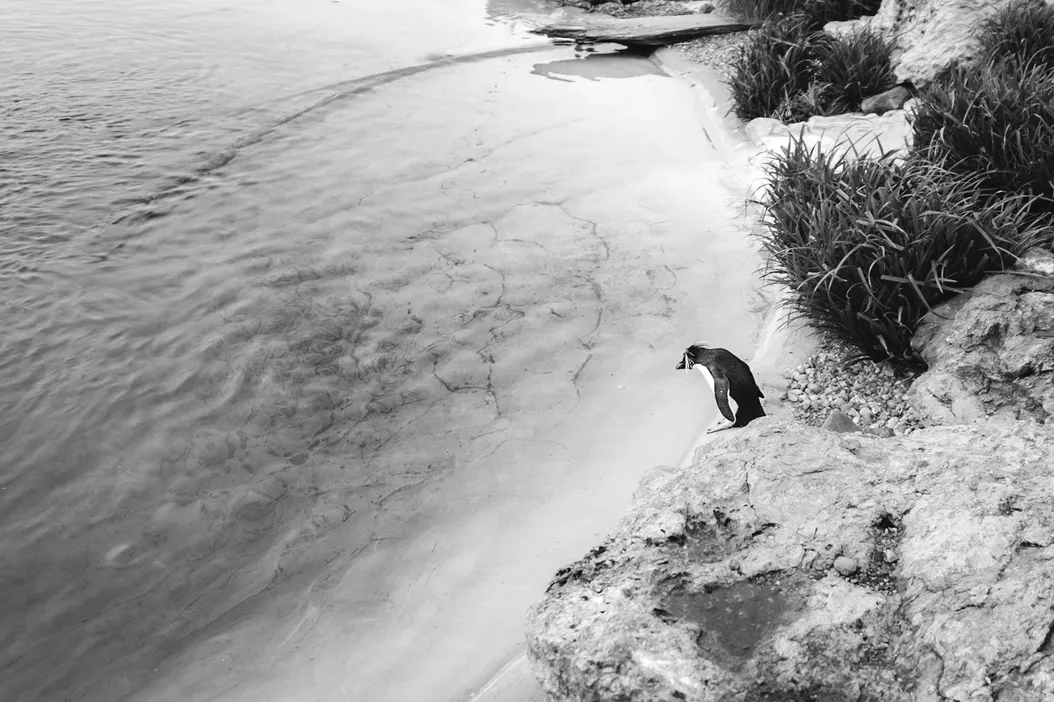This is part 2 of a two-part series. Part 1 is here.
Going light
When I left Twitter in 2016, it wasn't hard. Because in a way, it had left me: my niche of Greece's economic crisis and grassroots activism had moved on. Here's what I did.
First I downloaded an archive of everything I'd ever tweeted. Then, to reset everything to zero, I set fire to my online garden, wiping a decade of posts in a few minutes. It was scary, but exciting.
Finally, I deleted the Twitter app from my phone and iPad, so I could only access the platform from my Mac. With that simple move, I put a large part of my internet usage back in its place, untemptingly tethered to a tabletop.
Now I had distance from the platform, and extra time. And I found I had space to work on side-projects I'd been putting off for years. I finished two photo sets, had an exhibition, and took more photos. I completed a body of personal writing. It was 2017, and because of AirBNB fever we had to move apartment eight times that year. So I was busy with 'real life', too.

I also became curious about the malicious machinery of Big Tech. How, I wondered, could these Silicon Valley giants have captured my brain? Through podcasts, books and articles, from Tristan Harris and Scott Adams to Robert Cialdini and Jonathan Haidt, I learned how attention farming hijacks our primitive brains. How we signed up for connection, but ended up killing our concentration. How tools of empowerment had become tools of manipulation.
Trump was now in office; tribalism and online toxicity were now the norm. Right and left, people were getting cancelled for silly things they'd said years ago. Legacy media provided a live, tragic case study for all the ills I'd been reading about.
Not me, you bastards, I thought. You won't get me. From 2017 to 2019, you could count on my hands how often I used social media.
But damn, it was isolating! I was spending too long in my own head. I'd turned down the noise, but replaced it with silence. And some days, it felt worse.
And then came March 2020. Yes, that March 2020.
It was time to go back to Twitter. But this time, on my terms.
Shooting for equilibrium
So here's what I've found works for me.
Goals
What does a thinking radical need Twitter for? Roughly:
- Learning: Breaking news on your issue. Longform insights or research (for wonks); examples of tactics (for creatives and do-ers)
- Discussion: To bounce ideas off similar minds (while agreeing to disagree)
- Building contacts: With people affected by your issue; with potential supporters. And being a contact point for media, allies, similar campaigns, etc.
You should be able to have all that while remaining sane, spending only a short time on Twitter, being allowed to make mistakes there and change your mind, still being able to do deep work, and while being only minimally screwed by Big Tech. Sounds fair, no?
Recommendations
- Download all your tweets, to keep them safe. It's your content, and you may need it in future. (Here's how.)
- Delete all your tweets, but not the account. (Use Tweetdelete.) Twitter should be more like an ephemeral scratchpad. You should be able to make mistakes, change your mind and not have old tweets throw back at you.
- Use the platform your way. Remove Twitter's game-ification by browsing it on the web on desktop, but using Cascadea and Minimal Twitter to strip out the clutter, and using Twitter Demetricator to kill the metrics. (Forget mobile because you'll need to download the official mobile apps and they are awful.) Cull who you follow, keeping it to 200 or less. Delete your tweets at least once a month (feels lighter). Use the 'block keywords' function to mute topics you don't care about.
- Make your phone action- rather than browsing-first: Reorganise the apps on your home screen to prioritise doing. If an app isn't for interacting with another human (e.g. Messages) or takes you longer than two minutes to consult (e.g. Maps), relegate it to the app screen (including Tweetbot and Safari) or delete.
- Be notified by humans, not apps: Across all your apps, turn off notifications except those from real people writing to you specifically (mentions and direct messages OK; retweets and follow alerts and other app-generated fluff, not OK). Launch Do Not Disturb mode each evening, letting in emergency calls only.
- Develop a new habit framework. I'm far from a good example here, but the key to developing new habits is small iterations and consistency. James Clear's Atomic Habits is great for this. Aim to connect to social media max three times a day, for max 15 mins (set a timer) and not before noon. Use Reader (RSS!) to save links throughout the day; read them on paper instead of on-screen for better retention.
After working like this for two years, am I a Twitter success story? No! But I'm not trying to be. All I want is to use it as a tool, without it using me.
And anyway, Twitter is no longer the online garden I tend to. What replaced it, you ask? You're reading it :).
Update 05/04/23: Zvi Mowshowitz has a detailed look at Twitter’s latest moves on verification and open sourcing the algorithm. A must-read to understand where Twitter is at today, and how to use it right.



